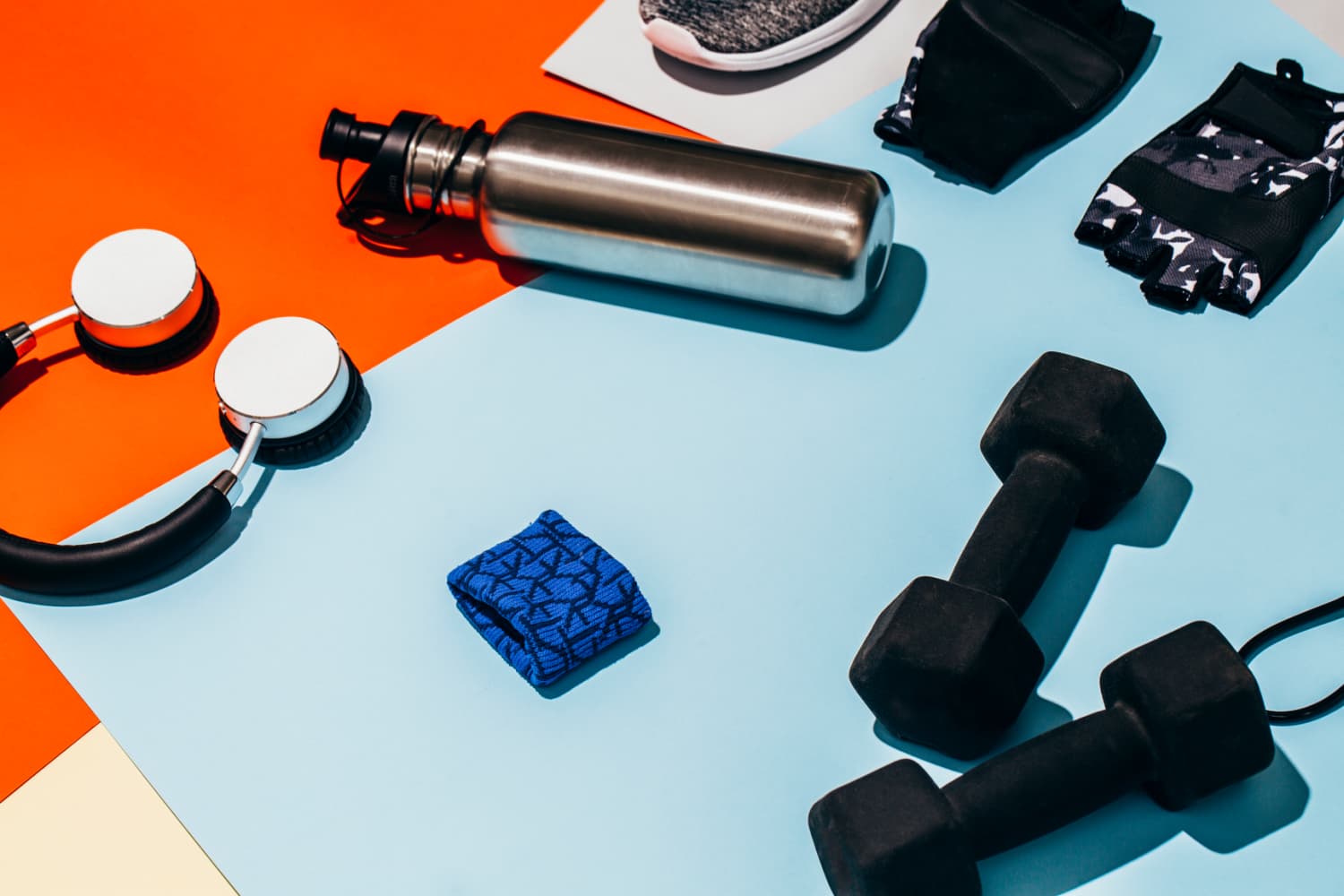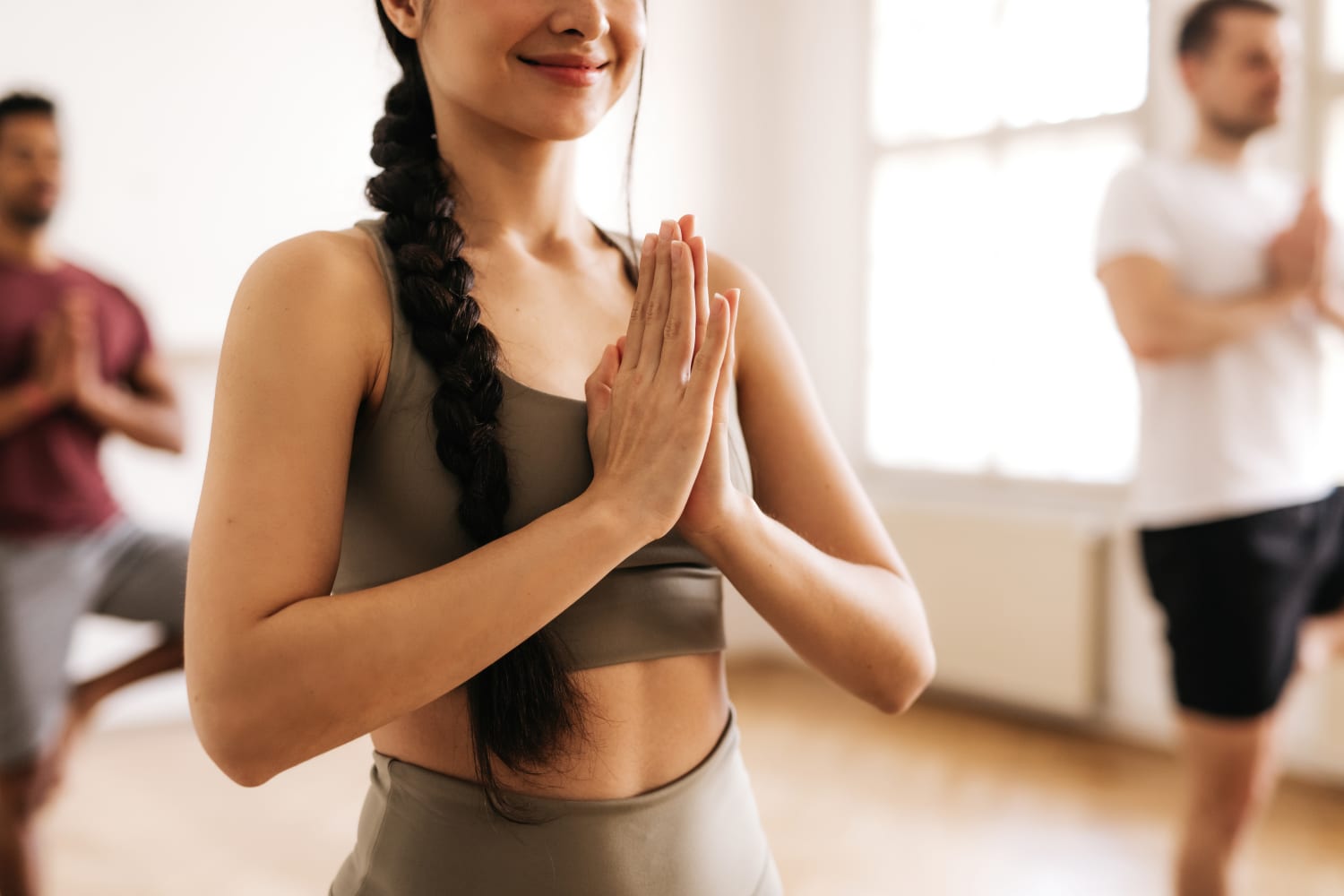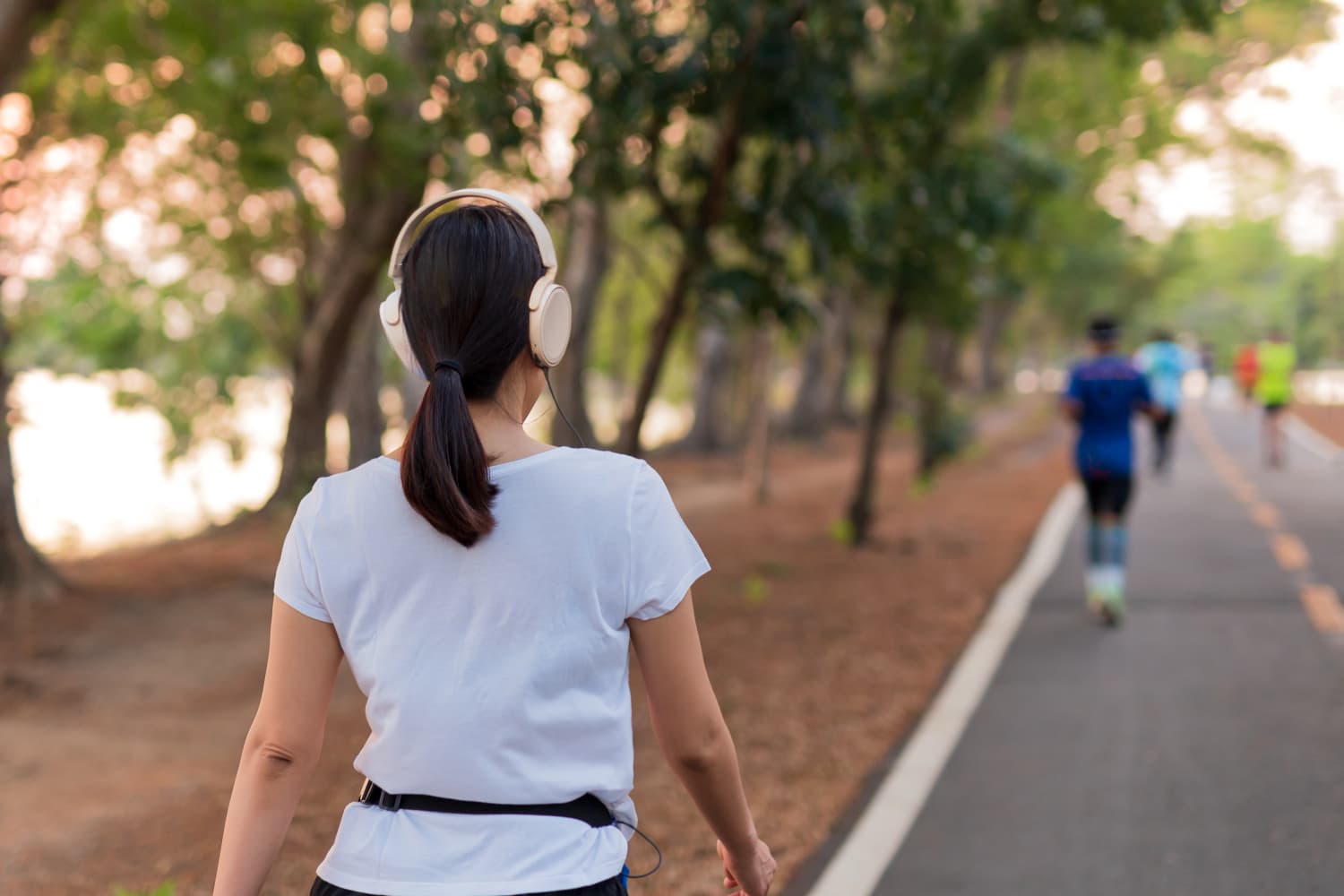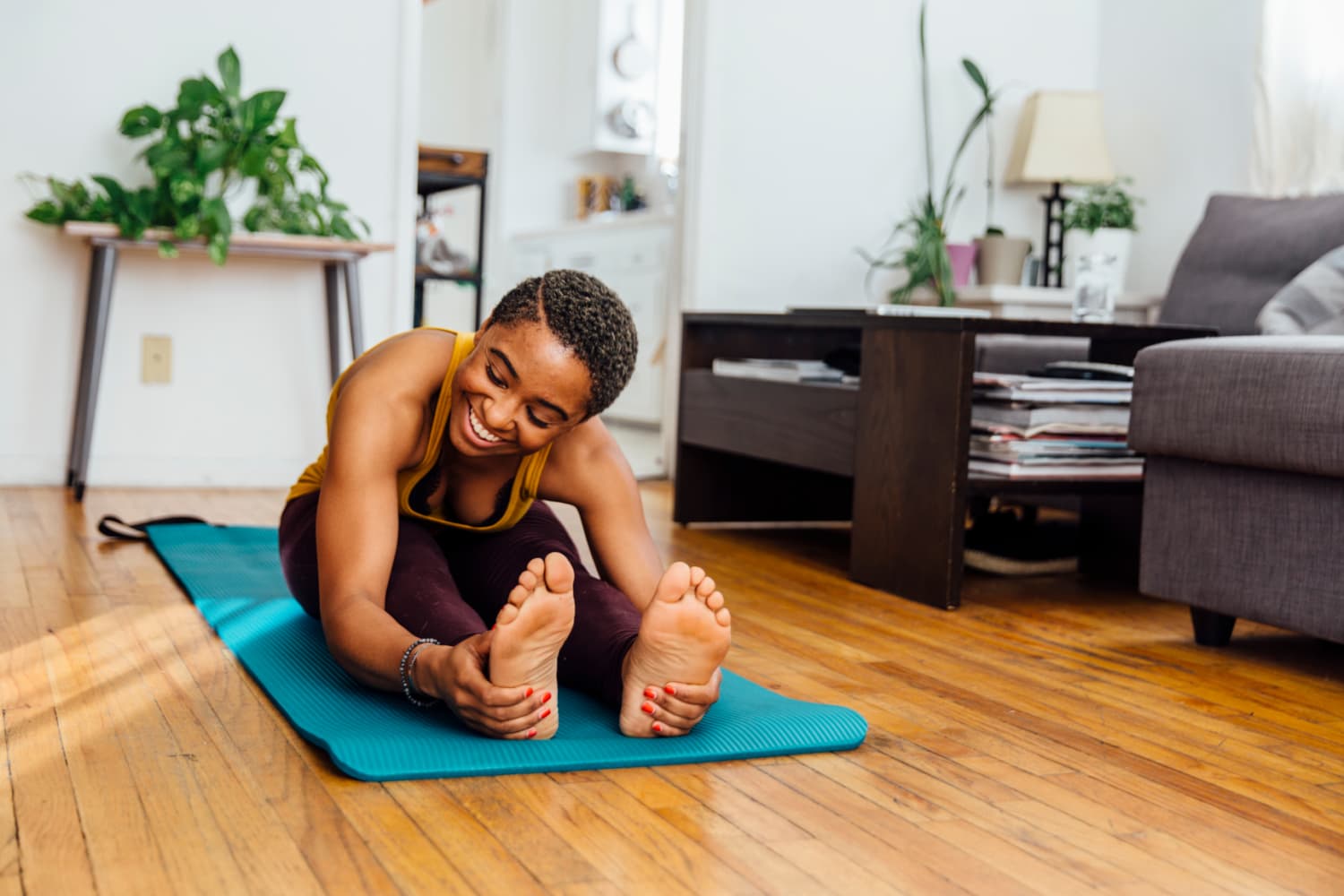
by Furnishly | Jan 22, 2023 | Design Inspiration, Style
Now that the new year has begun, your social media feed is likely filled with ways to start and keep resolutions, like journaling more or exercising consistently. If you’re committed to getting in more movement, but are unsure of how to keep it going, here’s a good source for perseverance inspiration: marathoners. They commit to the process year-round and are particularly disciplined with their training and movement. I reached out to some marathoners to find out what their tips are for sticking to a goal.
For more content like this follow
Whether it is training for a marathon or taking a walk around the block, making these tasks convenient and accessible is a key component of staying disciplined. Ryan Ernsbarger, fitness trainer and marathon enthusiast, says his top tip for “staying consistent on any training plan is to try to workout at the same time that works best for your schedule and find the closest gym and running route to your home. If there are too many barriers between you and training, it is much less likely that you will be consistent, especially when the initial motivation declines.” It’s hard to resist fitness goals if you automate what and when you do a particular activity.
Motivation becomes easier if you know your reasoning behind pursuing a goal. Ernsbarger believes most people will skip a workout on bad days. ”You must have a ‘why’ that is greater than your excuse. You will need to rely on your ‘why’ the most for those days,” he says. When there isn’t a “why” in place, Ernsbager says, “There is a high chance that you will fall into the trap of skipping workouts when things get challenging. Those are the most important days to overcome when trying to reach a goal.”
Sometimes it helps to start small because it minimizes procrastination by creating more manageable steps to help you meet your goals.
Marathoner and NASM-certified trainer, USATF and RRCA-certified run coach and founder of Runstreet, Marnie Kunz recommends “mini goals for short-term success and long-term exercise adherence.” She suggests working out for 120 minutes a week: running four days a week or strength training twice a week. “It sounds simple but it helps me keep on track with my fitness and stay active without the pressure of a big goal,” says Kunz.
Focus on What You Can Control
People sometimes forget that a workout is something you can control. And when other things feel unwieldy or uncertain, you can always rely on working out.
Florida Neurosurgeon and marathon runner Dr. Yoav Ritter says, “Workouts are tasks that are completely in your control. So regardless of how your work day went or your family life is going, this is something you use as a positive accomplishment for the day. A bright light that the athlete can be proud of, regardless of how the rest of the day went.” Keeping this silver lining in mind may help with motivation because it is a choice within your control.
Sometimes you may feel like you’re out of your comfort zone when it comes to your movement and fitness goals, but it doesn’t mean you can’t ask for help. Running with a group or exercising with a buddy not only helps your individual goals, but it also builds a social connection. You’re more likely to associate your movement or fitness goal with a positive feeling.
Ultramarathoner Kevin Martin recognized that he needed a coach when he started running longer distances. “Realizing I did not know much about running, I found one of the top ultramarathoners and she agreed to be my coach for a modest fee. She gave me all of the details I needed in regards to training, gear, and race day execution,” he says. He believes that having a coach and accountability partner helped his consistency.
Putting something on the calendar can motivate you to work toward goals. Whether it’s 25 kettlebell swings, a walk around the neighborhood, or taking a fitness class, writing it down on a calendar may help in staying consistent. Martin strategically schedules races over an 18-month timeframe to aid in motivation and also allow him to test himself on “gameday.” Rather than focus on the big objective (50-mile run) in the future, he was able to focus on the immediate objective (i.e. half-marathon in two weeks).
“Having something in the near future on my calendar always motivated me to get the run in when I did not want to. If I only had the 50-miler on the calendar in 8 months, I easily would have skipped more workouts,” says Martin.

by Furnishly | Dec 13, 2022 | Design Inspiration, Style
It’s hard not to be skeptical toward trendy workouts, especially when mainstream culture tends to treat wellness and weight loss as synonyms. But just because something is super popular doesn’t necessarily guarantee it’s nonsense.
For more content like this follow
If you’ve been anywhere on social media in the last few years, you might’ve heard of the 12-3-30 workout. If not, some background: Influencer Lauren Giraldo created a treadmill workout that she called the 12-3-30, which she shared on YouTube back in 2019; it took off when she shared it again on TikTok in 2020. It’s very straightforward — get on the treadmill and set the incline to 12. Then walk at three miles an hour for 30 minutes.
Giraldo says it made her feel more confident about going to the gym, and that she lost 30 pounds doing exclusively this workout five days a week. If you scroll through comments you’ll see plenty of 12-3-30 praise and endorsements from those who have experienced similar results.
Gym intimidation is real, and any movement is a good thing. So if this is the workout that makes you comfortable moving more, that makes it a good workout.
“It’s easy to digest. That’s what makes it TikTok friendly, right? I like the way Lauren framed it — that it was a way to get her into the gym. It has a low intimidation factor,” says Burdick. “It’s very accessible in the sense that you could have a $10 gym membership to a Planet Fitness and do this, which is great.”
The workout centers around walking, which is considered a low-impact exercise. There are plenty of benefits to low-impact exercise, including improving balance and heart health, while decreasing blood sugar levels, blood pressure, and LDL (“bad”) cholesterol. Plus if you do 12-3-30 five times a week like Giraldo, you’re hitting 150 minutes a week, which is the American Heart Association’s recommendation for physical activity.
To be clear, this isn’t exactly a chill workout. Burdick and I both lift three to four days a week, and I can swim about a mile straight comfortably (which is cardio, for reference), so we’re both in decent shape — and let me tell you, we felt it.
“It’s really hard. The incline was intense on my back and my ankles because of the flexion, so if you have tight calves or ankles the 12 percent incline would be intense,” says Burdick. “I’d consider myself physically fit, and I wanted to turn the incline down.”
I also worry that someone already feeling intimidated by the gym would be discouraged by this workout if they’re starting from a more sedentary place. “Three miles an hour was good, but 30 minutes is a long time,” Burdick agrees. “You could also break that up into a seven day span and do 20 minutes every day. Or even if you’re about to weight train, you could do 10 minutes to warm up.”
Again, weight loss and better health aren’t synonymous, and the 12-3-30 workout isn’t a magic formula for losing weight. If you start doing this workout five times a week like Giraldo when you formerly weren’t active, it could likely lead to a calorie deficit which would cause weight loss. But weight loss can also be impacted by a myriad of other factors like your genetics, the type of medication you take, or how much muscle is on your body.
“Basically yes, if you do this workout you could lose weight. But there are nuances,” says Burdick. “For example, I burn more calories than someone who doesn’t strength train. Let’s say that they do cardio — the second they’re done doing cardio, they’re done burning. When strength training, your body creates micro tears in your muscles and needs to regenerate those muscles, which continues to require energy and burn calories.”
The important thing about this workout is that it’s motivated people to include more movement in their life, which, I love to see it. If you’re thinking of trying 12-3-30 for yourself, consider sparing yourself from having tight calves by slowly increasing the incline as opposed to starting at 12 percent out of the gate. If weight loss is your goal, 12-3-30 could be part of your program, but just know that any type of exercise can be a part of your program. And lastly, with obvious bias, Burdick suggests adding some strength training to your routine.

by Furnishly | Sep 15, 2022 | Design Inspiration, Style
Jennifer PrinceContributor
Jennifer Prince’s work is featured on several national travel sites, such as Travel + Leisure, National Geographic, AFAR, Lonely Planet, and Conde Nast Traveler. She thrives on off-the-beaten-path itineraries and is passionate about finding microstories to bring destinations to life. Jennifer currently lives in Virginia with her husband, and other than travel and writing, she enjoys ’80s music, vintage things, fostering kittens, time with her family, and dreaming about her next Airbnb venture.

by Furnishly | Sep 7, 2022 | Design Inspiration, Style
The “hot girl walk.” If you’ve spent any amount of time on TikTok, then you’ve likely encountered a video or two about this exercise trend. As the name suggests, a hot girl walk is a slow-paced, intentional outdoor stroll with a focus on confidence-boosting vibes. Self-love anthems by Lizzo or Beyoncé are mandatory, and a specialty coffee is encouraged but not required.
For more content like this follow
The term was coined in 2021 by TikToker Mia Lind, who realized during the COVID-19 pandemic that long walks often take on a “meditative element” conducive to promoting self-love. Lind recommends taking two- to four-mile walks (so, roughly 4,000 to 8,000 steps) while listening to a mood-lifting playlist or podcast for the full experience. She has even noted some changes to her physique as a result of regular hot girl walks.
But for me, the transformative power of the hot girl walk has nothing to do with my appearance and everything to do with my relationship to movement.
Prior to introducing hot girl walks into my life, I viewed exercise as a form of punishment. It didn’t matter how many accolades I’d wracked up in my professional life, or how loved I was by my friends, family, and partner: I constantly questioned whether I was worthy of success, love, or even physical affection. As a queer person in a larger body whose gender presentation defies societal norms, it was all too easy to redirect this internal lack of confidence toward my outward appearance.
For most of my adult life, I channeled these gnawing feelings of insecurity into my workout routine. I prioritized grueling, high-intensity cardio workouts over everything else. The stair master, the treadmill, the elliptical — these machines were my second home. I blared mood-boosting music every time I hit the gym (yes, including the occasional Lizzo or Bey bop), but there was nothing meditative or even remotely celebratory about these workouts.
Thanks to diet culture and systemic fatphobia, I’d internalized the notion that exercise was only valid for people like me if used in pursuit of a smaller, more conventionally “attractive” body. I didn’t realize how deeply I’d absorbed these problematic values until I first stumbled upon a video of a TikToker evangelizing a little something called the “hot girl walk.”
Upon first (and second, and third) watch, the concept seemed silly. I’m a freelance writer who lives in New York City. I walk everywhere, especially after the onset of the COVID-19 pandemic. How could this unavoidable part of my daily life constitute exercise, let alone a self-care practice? Better yet, I’m genderfluid. It’s semantics, sure, but could a TikTok trend targeted toward “hot girls” actually benefit me?
But something about the hot girl walk struck a chord. Per Lind’s definition, it pairs movement with mindfulness. These walks aren’t about achieving a personal fitness goal, reaching some arbitrary number on the scale, or even going anywhere in particular. The whole point is to enjoy the present moment and honor each and every part of yourself, from the personality quirks that make you, you, to the core muscles that enable you to stand upright in the first place.
Over the past year and a half, I’ve begun incorporating hot girl walks into my daily life. I don’t have a hard-and-fast routine, but my hot girl walks usually involve a comfy T-shirt and bike shorts, an iced coffee from my favorite local cafe, and the latest episode of The Astrology Podcast. I meander as slowly as one can on a New York City sidewalk and try to stay in touch with what my body needs. If I’m feeling tired, I’ll cut my walk short; if I’m bored or understimulated, I’ll take a different route for a change of scenery.
I haven’t completely abandoned vigorous gym sessions. I’m still a sucker for a quick sprint after a particularly stressful work day. Believe me, some things never change. But what I have kicked to the curb is my perception of exercise as inherently punitive.
When I hit the pavement for a hot girl walk, I feel joy and excitement — two emotions I never used to associate with movement. It’s not just about the slower pace or lessened rigor, either. When I carve time out of my busy day for a hot girl walk, I commit to moving my body with the intention of cultivating self-love, not harping on insecurities.
I’m reminded of the late feminist scholar bell hook’s groundbreaking text “All About Love: New Visions”, in which she invites us to “[think] of love as an action rather than a feeling.” I like to think of my hot girl walks as love in motion and encourage anyone reading this to give them a try. What’s the harm in indulging an opportunity for joyful embodiment?
Lately, I’ve found myself feeling tenderness toward my younger self, who internalized so many harmful messages about movement and her self-worth. I wish she could see me now, but I’ll settle for blasting the pop-punk music she loved on my hot girl walks.
This piece is part of Transformation Month, where we’re showing off amazing home makeovers, brilliant tiny tweaks, inspiring before & afters, and so much more. Head on over here to see it all!

by Furnishly | Apr 8, 2022 | Design Inspiration, Style
We independently select these products—if you buy from one of our links, we may earn a commission.
If you’re active on Instagram, Pinterest, or YouTube’s trendy home fitness end, then you’ve seen Bala. I’ll even venture to say you’re either already obsessed or maybe (like me) didn’t even know you were looking at workout equipment. Bala is the home fitness brand for those of us who color-code our calendars in custom pastels and consider how our microwaves and bath towels can contribute to our decor — aesthetically minded folks who still want things to work.
I’m no stranger to home workout equipment — my mom was the talent in a number of home workout videos from the 90s through the 2010s — but as someone who prioritizes the look and feel of my own home, neon exercise bands and clunky weights never seemed to have a place in my space. I’ve gone back and forth between compromising my environment for the sake of a good workout or sacrificing my own wellness in the name of interior design. To make matters more complicated (my M.O… ), none of my city apartments have had the storage space for me to be able to hide my ugly home workout gear. Basically, Bala was made for people like me.
Even if you’re not quite as tightly wound about the look of your space as I am, Bala’s range of home workout equipment would be inspiring to anyone in today’s visually driven world. For me, it’s the collection I didn’t know I’d been waiting for, and it looks beautiful when I accidentally (or purposefully) leave it out when I’m done exercising. I got the chance to try the newly launched Bala Floor Set, which includes the Play Mat, Balance Blocks, and the Hourglass Roller. Of course, I also had to put Bala’s OG product, the Bala Bangles, to the test as well. My take? You’re going to want the complete collection.
I was skeptical at first that these great-looking pieces were only about Instagrammability, not function. But despite how un-workout-y the collection seems, each piece within it is designed with utility as the top priority. For example, in the middle of a vinyasa practice, the semi-circle curve at the top of the Play Mat made me wonder why yoga mats haven’t always been designed this way. I tend to bruise during floor pilates or get uncomfortable while lying flat on my back in savasana, but this mat’s 8mm thickness solves both of those problems for me. Even though it’s thicker than other mats, it rolls up just as tightly and comes with a strap to make carrying it easy. It’s also antimicrobial, and the super-smooth, moisture-wicking surface means I can actually complete a hot yoga class without my usual slip-and-collapse routine.
The semi-circle Balance Blocks allow me to make adjustments by simply moving my hands higher or lower on the curve rather than inconveniently needing to reposition the block, which has been a game changer because I’m able to focus my efforts on pushing myself that extra inch or lessening the tension by moving my body, not the tool that’s supposed to be helping me. The Hourglass Roller then makes my post-workout stretch much more dynamic. Its cinched center means choosing precisely when and where to add more pressure without having to push my legs or back down onto the roller to get it. The Bala Bangle ankle and wrist weights, like Bala’s other hard-touch gear, have a smooth-yet-grippy surface that’s totally unique compared with others I’ve tried. It’s soft to the touch and won’t irritate your skin in cases of friction — no velcro here!
Bala offers kits tailored to your particular routine, from floor workouts or yoga to weights or high impact. There’s also a pared-down kit with just the basics, which I think is perfect for travel. I personally love taking my Bangles with me when I’m on the road. The kits (and all Bala equipment) come in a range of unprecedentedly cool colors when it comes to fitness gear. From sage green to matte black and even soft beige, whatever colors energize and inspire you or simply complement your aesthetic, Bala’s got ’em all. You can even mix and match for your own custom collection.
Bala continues to pleasantly surprise me every time I work out — and since I plan to continue adding to my Bala range at home (hello, Power Ring and Bala Beam), it’s exciting to know that all the fitness milestones that Bala has helped me hit so far are only just the start.
Buy: Bala The Complete Home Gym Kit, $399









